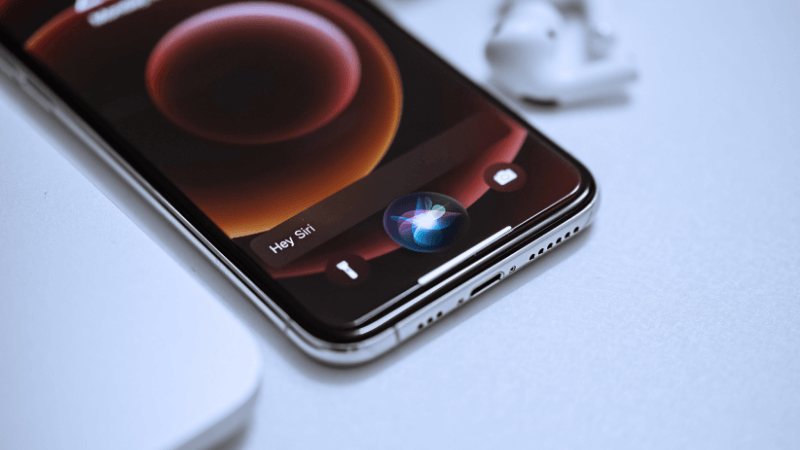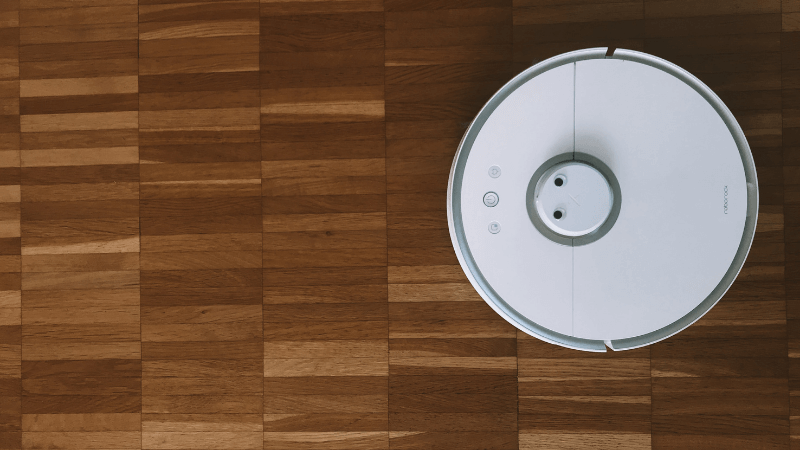Artificial intelligence has become the keyword that defines the future. However, when we hear news about artificial intelligence, we can assume that it has nothing to do with us. Artificial intelligence is not just something that the big tech giants are focusing on. In reality, artificial intelligence is encountered by most people in their daily work. In this article, we will refer to 5 of the most popular examples of how artificial intelligence is already used in our daily lives.
1. Siri

Siri is a virtual assistant that is part of Apple’s operating systems. The idea behind Siri is to talk to her like you would a friend, who helps you do different things or answers your questions.
Siri is designed to provide a way to interact with the full range of Apple devices and has access to all applications. Siri offers an interactive, hands-free environment for a wide range of activities. You can ask Siri questions, tell her to show you something, or execute various commands on your behalf.
How does Siri work?
Siri is based on artificial intelligence and natural language processing and consists of three components – a conversational interface, awareness of the personal context, and delegation of services.
The conversation interface is the part of Siri that can interpret the user’s voice input, and generates an easy-to-understand voice output from the application. This component is based on Natural Language Processing (NLP), a branch of AI that develops systems capable of understanding and responding to direct human communication. The operation of word-by-word speech recognition must be good to hear what you say, but deciphering the meaning of words is limited to statistics and machine learning. This is where the personal context awareness system comes into play. Siri can make predictions based on the keywords used, their frequency, and a person’s general habits. The service delegation system is direct access to all iPhone applications. This access is essential for Siri to be able to do what it does.
Siri relies on the generation and processing of natural language, and on machine learning to function efficiently and improve its performance over time.
2. Robotic vacuum cleaners

A robotic vacuum cleaner is a self-contained vacuum cleaner that has intelligent programming and a limited floor cleaning system. It operates autonomously, without human control. These smart devices can perform many functions, such as vacuuming, cleaning with a mop, cleaning windows, etc.
How do robotic vacuum cleaners work?
They use artificial intelligence to scan the size of the room, identify obstacles, and discover and remember the most effective cleaning ways. Some models can also calculate how much is to be vacuumed depending on the size of a room. Robot vacuum cleaners do not need human assistance to clean floors. They use a combination of sensors and enhanced AI recognition technology.
3. Uber

Uber is a transportation company that offers the Uber mobile application. This is used to send a travel request to a nearby Uber driver.
How does Uber work?
The driver receives a notification with your location and agrees to pick you up and take you to the requested destination. The Uber application automatically calculates the navigation route that the driver will use, the distance, and the fare. The amount paid is transferred to the driver using the selected payment method, without the need for further discussions with the driver. At the end of the race, the passenger and the driver can give a rating.
Artificial intelligence powers many of the technologies and services that underlie the Uber platform. Thus, the decisions made are based on correct data, and aim to improve user experiences.
Uber AI is Uber’s center for research and advanced artificial intelligence platforms. Uber AI makes applications in computer vision, natural language processing (NLP), deep learning, advanced methods of optimization and intelligent location processing, etc. These techniques and models of machine learning and AI allow Uber to work simultaneously on several verticals, from transportation and mobility, to customer support and navigation for partner drivers.
Uber AI Highlights in 2019:
- Improving the accuracy of location detection;
- Using computer vision to make Uber safer and more efficient;
- Improving real-time forecasting with neural networks;
- Creating more uniform communication with conversational AI.
4. Tesla cars

Tesla is an electric car manufacturer that has proven that electric vehicles can be desirable, offering outstanding performance. Today, Tesla builds not only fully electric vehicles but also infinitely scalable clean energy storage and generation products.
How do Tesla cars work?
Tesla cars discover the optimal route, navigate the streets (even without lane markings), manage complex intersections with traffic lights, stop signs, and roundabouts, and navigate crowded highways, where other cars travel at high speed.
The use of the latest artificial intelligence technologies, such as autopilot in cars, has created curiosity among car enthusiasts. Tesla used customer data sets to analyze, predict and collect information about customer requirements. He then used these analyzes to improve the characteristics of the vehicles. The current artificial intelligence technologies that Tesla uses in cars are based on machine learning without supervision.
We will present two of the most important AI features in Tesla vehicles:
- Integrated AI chips: Tesla aims to create integrated AI chips that allow cars to navigate highways and even in traffic. For better performance, Tesla car systems have two AI chips. Both make separate assessments of the traffic and danger situation around the cars. The ratings are compared and the car is properly guided if the outputs are the same. If there is ambiguity in the results obtained, then the re-evaluation is done until a sure decision is made. Thus, dual chips allow better control over navigation in Tesla cars with automatic control.
- Autopilot: this allows cars to drive, accelerate and brake automatically. All new Tesla cars from 2016 come with an autopilot that includes Traffic-Aware cruise control functions and Autosteer functions. Autopilot operation is built on the principles of the deep neural network. Cameras, ultrasonic sensors, and radar are used to perceive the environment around the vehicle. The sensors and cameras give drivers an image of the environment, which is then processed very quickly to make driving safer. Radar is used to see and measure the distance around cars in light, dark, and other weather conditions. Ultraviolet techniques measure proximity in all cases, and the passive video recognizes objects around the car. Drivers are often reminded to keep their hands on the wheel, and failure to do so triggers a set of warnings. If it is still ignored, the car starts to slow down and eventually stops.
5. Youtube

YouTube is a video-sharing platform that can be accessed from PCs, laptops, tablets, and mobile phones.
How does YouTube work?
Users can watch, appreciate, share, comment, and upload their own videos. Due to a large number of users, activity, and content, YouTube is using artificial intelligence to constantly improve.
How YouTube uses artificial intelligence:
- “Up next” functionality. Based on the analysis of the videos watched, the appreciations and the actions of the user in the platform, with the help of a complex algorithm, Youtube can recommend for watching videos that the user will be interested in;
- Disposal of unacceptable content. Artificial intelligence has greatly contributed to YouTube’s ability to determine inappropriate content. YouTube is also equipped with an “inappropriate video classifier” that scans the main page of the platform, as well as the “Watch More” panels. The classifier examines feedback through viewers who may report a misleading title or inappropriate content.
- Automatic subtitle generation.
- Detecting and marking videos inappropriate for minor users.
- Detecting and deleting videos with fake news.
And the list goes on. Artificial intelligence has many applications that help us do everyday things, such as connecting with friends, using a virtual assistant, or using a sharing service. Many of us have been using AI daily for many years.
Do you want to know more about artificial intelligence and how it works?
We have prepared for you an article from which you can find out more
